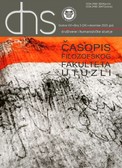SIMBOLIČKI JEZIK FILMA POST-DEJTONSKE BOSNE I HERCEGOVINE U KULTURNOM PAMĆENJU RATNE TRAUME – ANALIZA FILMOVA QUO VADIS, AIDA? I U ZEMLJI KRVI I MEDA
THE SYMBOLIC LANGUAGE OF FILM OF POST-DAYTON BOSNIA AND HERZEGOVINA IN THE CULTURAL MEMORY OF WAR TRAUMA – ANALYSIS OF THE FILMS „QUO VADIS AIDA?“ AND IN THE LAND OF BLOOD AND HONEY
Author(s): Tahani KomaricaSubject(s): Military history, Studies in violence and power, Victimology, Transformation Period (1990 - 2010), Film / Cinema / Cinematography, Inter-Ethnic Relations, Peace and Conflict Studies
Published by: Filozofski fakultet Univerziteta u Tuzli
Keywords: cultural memory; prosthetic memory; fictional memory; film; post-Dayton Bosnia and Hercegovina;
Summary/Abstract: The purpose of this study is to show the impact on the creation of cultural memory in which film, as an element of prosthetic memory, is one of the significant mass media forms of the artistic framework, easily accessible and viral convergent digital environment through the analyzes two films In the Land of Blood and Honey and Quo Vadis, Aida? produces in post-Dayton Bosnia and Herzegovina, which treat the most severe war traumas of raped Bosnian women and genocide against Bosniaks occurred during aggression against Bosnia and Herzegovina in the period 1992-1995. The analysis of these two films was done according to the concept of Astrid Erll which includes three categories of communication: intra–medial (experiential, mythical, antagonistic, and reflexive), inter-medial (premediation and remediation), and pluri-medial communication creating context for film reception as social-integrative collective phenomenon. The results of the analyses of films show that pluri-medial communication is not fully realized for the constructing and stabilizing the historical narrative as a social integrative phenomenon, and the film as a fictional prosthetic memory is not realized as a cultural memory of war traumas of Bosnian society. The film as a platform of prosthetic memory in the digital age has the potential to bypass rigid, censored, and propaganda ofpluri-medial communication emphasized in the mass media of Bosnian entity Republikof Srpska as well as Serbia which disables and limits the context of reception of social-integrative collective phenomenon of war traumas based on historical facts.
Journal: DHS-Društvene i humanističke studije: časopis Filozofskog fakulteta u Tuzli
- Issue Year: XXIV/2023
- Issue No: 24
- Page Range: 651-674
- Page Count: 24
- Language: Bosnian

